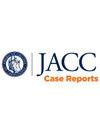Cardiogenic Shock in Hypertrophic Cardiomyopathy Treated With Mavacamten and Clarithromycin
Q4 Medicine
引用次数: 0
Abstract
Background
Mavacamten use has potential for clinically significant ventricular systolic dysfunction, including with drug-drug interactions (DDI).
Case Summary
A 66-year-old male with symptomatic obstructive hypertrophic cardiomyopathy was treated with mavacamten for 1.5 years. He received treatment for Helicobacter pylori infection with a combination therapy including clarithromycin. The patient developed cardiogenic shock (ejection fraction nadir of 21%) in the setting of new atrial fibrillation (AF) with rapid ventricular response and pulmonary infiltrates. A DDI between clarithromycin and mavacamten was felt to precipitate clinical decline. In this case, cardiogenic shock occurred in the setting of clarithromycin, AF, and possible infection. The CYP3A4 inhibitory effect of clarithromycin likely resulted in accumulation of mavacamten, a cardiac myosin inhibitor approved for treatment of symptomatic obstructive hypertrophic cardiomyopathy (metabolized by CYP2C19-CYP3A4).
Take-Home Messages
This unique case highlights the potential for cardiogenic shock with mavacamten in the setting of AF, possible pneumonia, and suspected DDI. When using mavacamten, early recognition of systolic dysfunction and awareness of DDI is important.
马伐卡坦联合克拉霉素治疗肥厚性心肌病心源性休克
背景:使用马伐卡坦有可能导致临床上显著的心室收缩功能障碍,包括药物-药物相互作用(DDI)。66岁男性,有症状性梗阻性肥厚性心肌病,用马伐卡坦治疗1.5年。他接受了包括克拉霉素在内的幽门螺杆菌感染联合治疗。新发心房颤动(AF)患者发生心源性休克(射血分数最低21%),心室反应迅速,肺部浸润。克拉霉素与马卡马坦之间的DDI被认为会导致临床衰退。在本例中,心源性休克发生在克拉霉素、房颤和可能感染的情况下。克拉霉素的CYP3A4抑制作用可能导致马伐camten的积累,马伐camten是一种心肌肌球蛋白抑制剂,被批准用于治疗症状性阻塞性肥厚性心肌病(由CYP2C19-CYP3A4代谢)。这个独特的病例强调了在房颤、可能的肺炎和疑似DDI的情况下使用马伐卡坦可能发生心源性休克的可能性。当使用马伐卡坦时,早期识别收缩功能障碍和意识到DDI是很重要的。
本文章由计算机程序翻译,如有差异,请以英文原文为准。
求助全文
约1分钟内获得全文
求助全文
来源期刊

JACC. Case reports
Medicine-Cardiology and Cardiovascular Medicine
CiteScore
1.30
自引率
0.00%
发文量
404
审稿时长
17 weeks
 求助内容:
求助内容: 应助结果提醒方式:
应助结果提醒方式:


